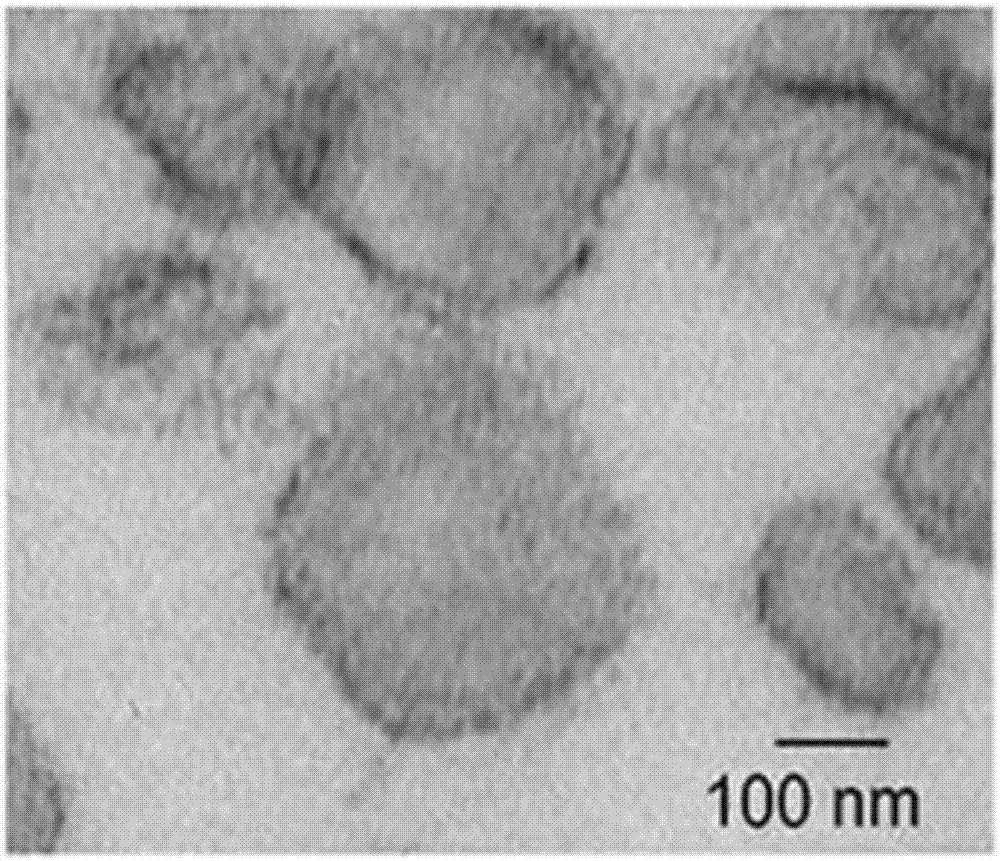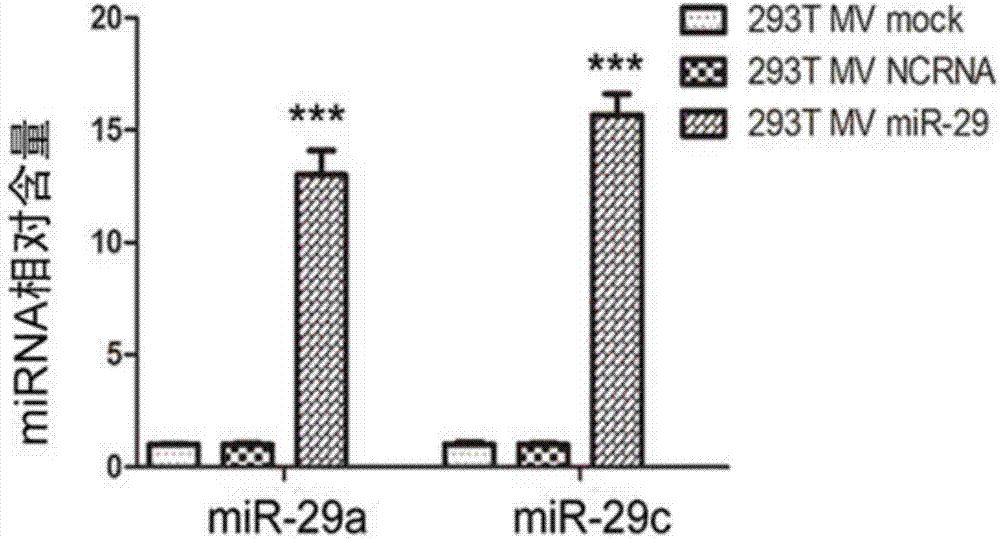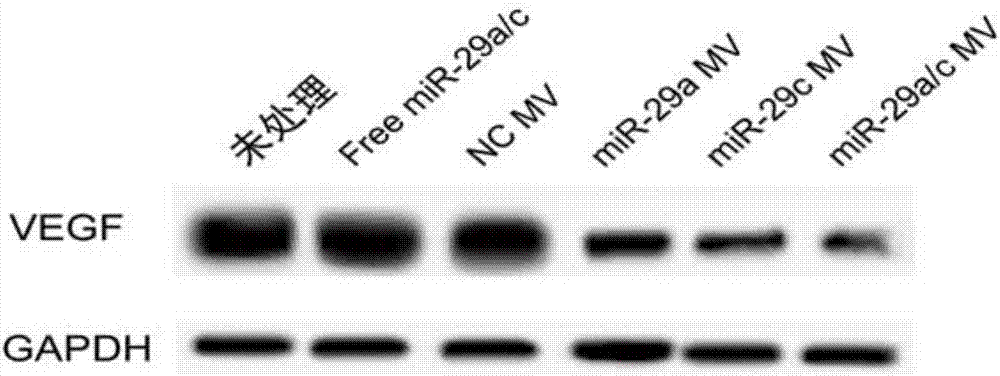Method for inhibiting gastric cancer angiogenesis by using micro vesicles as miRNA (Micro Ribonucleic Acid) transport carriers
An angiogenesis and microvesicle technology, applied in the field of molecular biology, can solve the problems of complex interspecies immune response, time-consuming, and heavy financial burden on patients
- Summary
- Abstract
- Description
- Claims
- Application Information
AI Technical Summary
Problems solved by technology
Method used
Image
Examples
Embodiment 1
[0037] Example 1: Extraction and Identification of Microvesicle Cells
[0038] Human embryonic kidney cells HEK293T were untreated or transfected with miR-29a / c mimics / inhibitor, NCmimics / inhibitor 24-48 hours after cell culture medium was collected; room temperature 3000 rpm, centrifuged for 20 minutes, 4 ℃ 10,000 g centrifugation for 30 minutes, the purpose is to remove cells and cell debris; after centrifugation, take the supernatant and ultracentrifuge at 110,000g at 4°C for 60 minutes; then discard the supernatant, resuspend the pellet with an appropriate amount of 1×PBS, and repeat for 4 Ultracentrifuge at 110,000g for 60 minutes at ℃; discard the supernatant, resuspend the pellet with an appropriate amount of 1×PBS and store at -80℃ for later use, or add it directly to the cells to be incubated or perform mouse tail vein injection experiments.
[0039] Immediately transfer the microvesicles obtained by ultracentrifugation to a centrifuge tube and add 2.5% glutaraldehyde...
PUM
 Login to View More
Login to View More Abstract
Description
Claims
Application Information
 Login to View More
Login to View More - R&D
- Intellectual Property
- Life Sciences
- Materials
- Tech Scout
- Unparalleled Data Quality
- Higher Quality Content
- 60% Fewer Hallucinations
Browse by: Latest US Patents, China's latest patents, Technical Efficacy Thesaurus, Application Domain, Technology Topic, Popular Technical Reports.
© 2025 PatSnap. All rights reserved.Legal|Privacy policy|Modern Slavery Act Transparency Statement|Sitemap|About US| Contact US: help@patsnap.com



